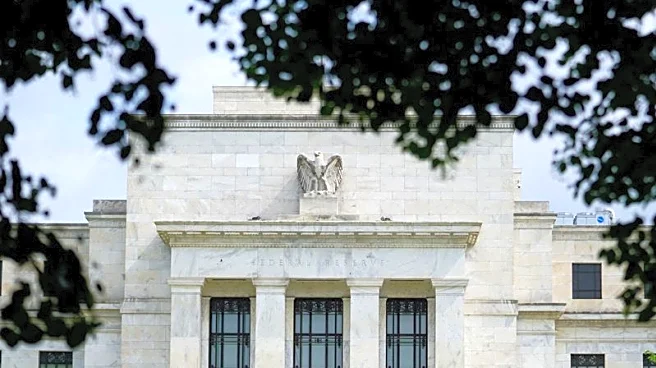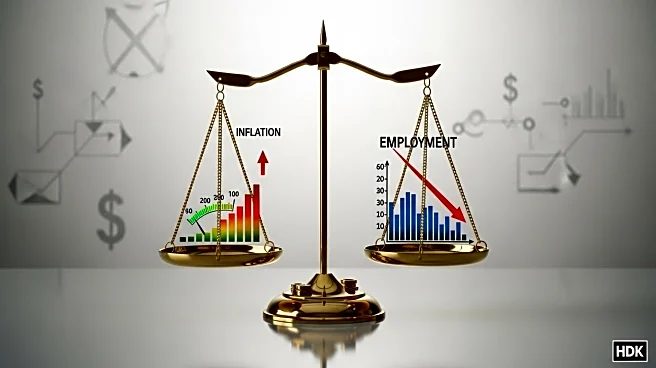What's Happening?
The Federal Reserve has released its latest Beige Book report, indicating that U.S. economic activity has remained largely unchanged, with employment levels stable in recent weeks. Despite this stability,
the report highlights that many businesses have begun reducing headcounts due to weaker demand and elevated economic uncertainty. Additionally, the report notes that labor supply in sectors such as hospitality, agriculture, construction, and manufacturing is strained, partly due to recent changes in immigration policies. The Beige Book, which compiles qualitative data from the 12 regional Fed banks, is published ahead of each Fed interest-rate-setting meeting to provide insights into the nation's economic health.
Why It's Important?
The Beige Book's findings are significant as they provide a snapshot of the current economic climate, which is crucial for policymakers at the Federal Reserve as they prepare for upcoming interest-rate decisions. The report's emphasis on stable employment amidst economic uncertainty suggests that while the labor market is not deteriorating rapidly, there are underlying challenges that could impact future growth. The strained labor supply in key sectors due to immigration policy changes could lead to increased costs and operational difficulties for businesses, potentially affecting overall economic performance. Furthermore, the report's insights into tariff-induced cost increases highlight ongoing trade tensions that could influence inflation and economic stability.
What's Next?
The Federal Reserve is closely monitoring conversations with business and community leaders to gauge the economic outlook ahead of its next interest-rate-setting meeting on October 28-29. Financial markets are anticipating another interest-rate reduction, but central bankers appear divided on the decision. The delayed release of a key inflation report due to the government shutdown adds uncertainty to the Fed's deliberations. As policymakers weigh anecdotal evidence from the Beige Book against official statistics, their decision will likely hinge on the balance between supporting economic growth and managing inflationary pressures.
Beyond the Headlines
The Beige Book's findings underscore the complex interplay between immigration policies and labor market dynamics. The reported difficulties in finding workers for entry-level positions in construction and manufacturing sectors highlight the broader implications of immigration policy changes on workforce availability. This situation could lead to increased competition for skilled labor, driving up wages and impacting business profitability. Additionally, the report's focus on tariff-induced cost increases reflects ongoing trade policy challenges that could have long-term effects on U.S. economic competitiveness.












